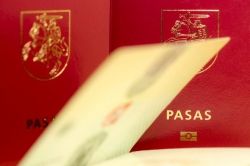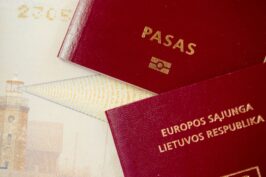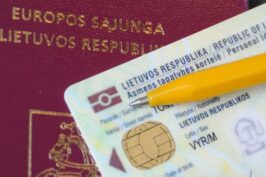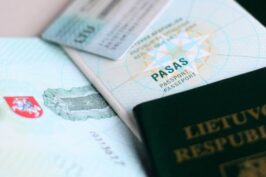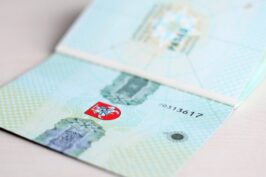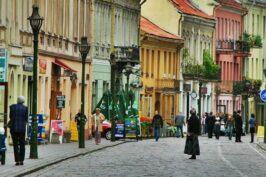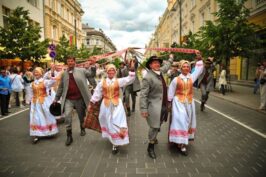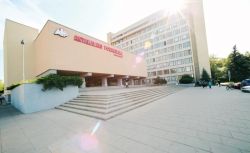- Home
- Lithuanian archives
Lithuanian archives
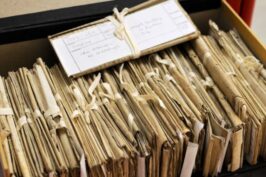
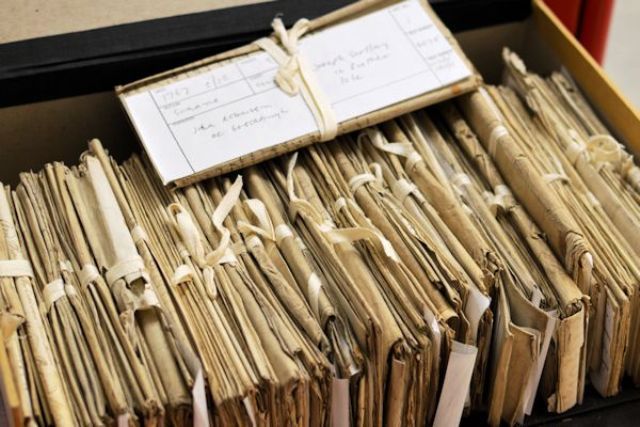
Lithuanian archives are state institutions that collect, preserve, and manage documentary heritage. They ensure the long-term preservation and accessibility of important historical, legal, administrative, and cultural documents to the public.
LITHUANIAN STATE HISTORICAL ARCHIVES
This is the largest and most important repository of archival documents for the Lithuanian history from the 13th century up to the declaration of the Independence of Lithuania in 1918, which is located in Vilnius, Mindaugo Str. 8. The documents stored in the Lithuanian State Historical Archives are the following:
- A set of documents of offices of the Grand Duchy of Lithuania (GDL), which is comprised of funds of offices of GDL in the 15th-18th These are book microfilms of GDL Chancellery (Lithuanian Metrics) of the 15th-18th century, GDL King’s Manor Board (the 16th-19th century), GDL Chief Tribunal (the 15th-19th century), GDL Treasury Commission (the 16th-18th century), GDL War Commission (the 18th century) funds, funds of various land, castle, magdeburger, submarine, compromise, ex-division, caprine, confederative courts (the 15th-19th century).
- A complex of documents of offices of the Russian Empire, which consists of funds of the Tsarist Russia offices and organizations in Lithuania at the end of the 18th century – beginning of the 20th century and funds of commissions responsible for the liquidation of offices to be evacuated to the Soviet Russia. The following funds shall be distinguished by their significance: The Lithuanian Chief Board; Vilnius General Governor’s Chancellery; Vilnius Civilian Governor and the Suwalki Governor’s Chancelleries; authorities, courts, banks, treasury chambers, gendarmerie and military institutions operating in Vilnius, Augustow, Suwalki Governorates; Vilnius City Magistrate, Duma and Board; Meeting of deputies of nobles from the Vilnius Governorate; the nobles of Vilnius and Kaunas Governorate counties; year 1831 and 1863-1864 insurrectionists, political investigation commissions; Agriculture and State Property Board funds of the Vilnius and Kaunas Governorates. This complex of documents also embraces documents significant to the Lithuanian history of science, culture and education, accumulated in the funds of the Society of Friends of Science in Vilnius, Vilnius Education District, Vilnius University and other offices.
- A set of documents of offices relating to the period of occupation by Kaiser Germany (year 1915-1918) is probably the smallest in the Archives. It consists of four funds of offices which operated during the First World War, i.e. funds of the Commander of the Lithuanian Military Board and the German courts of Vilnius Region.
- A complex of documents of confessional institutions and communities includes funds of the Lithuanian religious communities, the oldest documents whereof are of the 15th The largest part of the complex is made up of funds of the Roman Catholic Church institutions: Vilnius, Telšiai (Žemaičiai), Seinai Roman Catholic Dioceses, Kaunas Metropolitan Archdiocese, document funds of Panevėžys Diocese Curia, churches, monasteries, church books of birth, marriage and death records of year 1599-1941. This complex also includes document funds from other confessions: Lithuanian Bishopric of Units, Vilnius Orthodox Bishopric and its separate Orthodox churches, Evangelical Reformers and Evangelical Lutherans, Judaism religious, Muslim (Tartar) and Karaim religious communities.
- Various documents are collected in thirty funds of private persons, families and kins, the documents whereof comprise the period from the 15th century up to year 1941. Various documents accumulated reflect the history of famous Lithuanian kins and families and persons of vital importance to that region, as well as their political and cultural activities. It is worth to mention the funds of families of dukes Radvilos (1416-1939), Sapiegos (1524-1830), Oginskiai (1447-1915), counts Pliateriai (1501-1905) and Tiškevičiai (1451-1915).
- A set of document collections (the 15th-20th century) consists of 10 funds kept in the Archives. One collection is made up by collectors and transferred to the archives as a set of documents, while others are formed in the Archives, by selecting one characteristic. Noteworthy are privileges and writings of the heads of Lithuania and Poland for the Vilnius Jesuit Academy and the Jesuit colleges of Vilnius and Gardin (1578-1767), documents of Vilnius University professors (1738-1858), a collection of various documents (1489-1936), and the collection of Rekašius (1579-1914).
- A complex of Civil Vital Records is comprised of civil status act books made up in civil registry offices of towns and districts which operated in Lithuania from 15 August 1940.
- Collections of microfilms of documents consist of microfilms of written historical sources of the 13th-20th century kept in the archives and libraries of Belarus, Russia, Latvia, Poland, Ukraine, Sweden.
LITHUANIAN CENTRAL STATE ARCHIVES
The Lithuanian Central State Archives is situated in Vilnius, O. Milašiaus Str. 21. The Archives preserves the following records:
- Written documents
- Documents of the institutions of the Republic of Lithuania (1918–1940): funds of the Lithuanian State Council, Council of Ministers, Chancellery of President, ministries and departments, diplomatic missions abroad, offices of county heads, municipalities, scientific, cultural, educational institutions and public organizations, personal funds of public figures and diplomats.
- Documents of the institutions of the Klaipėda region: funds of offices of President of Karaliaučius District Administration and President of Gumbinė District Administration, Klaipėda Magistrate and Šilutė County Administration, cadastral office of the Klaipėda Region and other funds.
- Documents of the institutions of South East Lithuania occupied by Poland in 1919–1939: funds of civil administrations of Eastern Lands, Provisional Management Commission of Central Lithuania, funds of Vilnius Magistrate, Stephen Bathory University, funds of organizations and schools.
- Documents relating to the Nazi occupation period (1941–1944): funds of Commissar-General Office in Kaunas, district commissariats, district administrations, police stations, municipalities, offices of county heads, prisons, and Jewish Ghetto in Vilnius.
- Documents relating to the Soviet occupation periods (1940–1941 and 1944–1990): funds of the Supreme Council Presidium of the Lithuanian SSR, Council of Ministers, ministries, boards and committees, editorial offices, organisations, personal funds of famous people in science and culture.
- Video and audio documents
- Photographic documents (from the 6th-7th decade of the 19th century until nowadays): photographs, negatives, photographic glass plates, albums, vignettes, slides, digital pictures; among old photographs are the works of A. Strauss, J. Čechavičius, A. Fleury, V. Zatorskis; stored photographic documents by J. Bulhakas, M. Smečechauskas, J. Karazija, J. Miežlaiškis, B. Buračas, A. Varnas, A. Mickus, V. Janiselis. The Soviet period is reflected in the photographic material of the Lithuanian News Agency ELTA and editorial offices of newspapers. More than 100,000 photographic documents of the Lithuanian Monument Restoration and Designing Institute are stored, including numerous collections of documentary photography works of J. Juknevičius, V. Kapočius. Modern-day documentary photographs are also being accumulated.
- Audio documents: the 20th-21th century sound recordings on gramophone records, magnetic tapes, audio cassettes, CDs. The oldest sound record is a series of songs performed by Lithuanian male quartet from Riga and recorded in Riga in 1907. There are also voice recordings of the presidents of Lithuania A. Smetona and K. Grinius, and of famous Lithuanian figures, audio recordings testifying the events of 1940 in Lithuania, a collection of recordings of Kaunas Radiophone (Radio of the Reich) programmes relating to the war period, public speeches of Lithuanian figures of the Soviet period, lectures, recordings of conventions of various organizations and official celebrations of state holidays. Recordings of Vilnius Recording Studio are also worth mentioning. Voice recordings of representatives of Lithuanian Reform Movement Sąjūdis, scientists, artists, politicians, Lithuanian expatriates, former political prisoners and deportees reflect the course of restoration of the Independence and the period of restored Independent Lithuania. Recordings of the programmes of Lithuanian radio service in Chicago, Los Angeles, Baltimore (USA), Adelaide, Melbourne (Australia) and recordings of the Voice of America Lithuanian Radio Service of 1951–1995 are kept in the Archives.
- Video documents: Accumulation of video recordings started in 1988. They were mostly video clips filmed by cameramen of the Archives. They testify to the activities of the National Liberation Movement Sąjūdis, the restoration of independence of Lithuania, the events of January 1991. There are also video recordings of reminiscences of the former deportees, political prisoners, partisans submitted to the Archives by the Lithuanian National Foundation, Inc. Video documents in the Archives have been created until these days.
- Cinematographic documents: from the 2nd decade of the 20th century up to these days. Copies of the films made by the brothers Lumieres in 1895 – the earliest films ever made – are preserved in the Archives. There is also a valuable collection of the Lithuanian newsreels from 1918 – 1940 and the works of the first Lithuanian cameramen – K. Lukšys, J. Milius, brothers Motūza-Beleckas, S. Vainalavičius, S. Uzdonas and J. Miežlaiškis. Cinematographic material relating to the World War II period, the largest part of collection of cinematographic documents consists of documentaries made in the Lithuanian Film Studios and Lithuanian Television in 1946 – 1990. The first Lithuanian feature films “Blue Horizon” (Žydrasis horizontas), “The Bridge” (Tiltas), “Ignotas Returned Home” (Ignotas grįžo namo), “The Turkeys” (Kalakutai), etc. are stored in the Archives. Funds are constantly supplemented with the latest cinematic works.
KAUNAS REGIONAL STATE ARCHIVES
The Archives is situated at Maironio Str. 28B, Kaunas. The following records are accumulated and stored therein:
- Documents of offices of the Kaunas Governorate which operated at the 19th century- the beginning of the 20th century;
- Documents of municipalities and their divisions, education and medical institutions, private enterprises of Kaunas city and its district in 1919-1944;
- Documents of the soviet state and local self-administration institutions, industry, agriculture, education, medical institutions, public organizations that functioned in the territories of Jonava, Kaišiadorys, Kaunas, Kėdainiai, Prienai, Raseiniai districts in 1944-1990;
- Documents of the state and municipal institutions, offices, enterprises, non-state organizations which have been operating during the period of 1990-2003 in the current territory of the Kaunas Region; funds of personals documents.
LITHUANIAN SPECIAL ARCHIVES
The Archives situated in Vilnius, Gedimino ave. 40, preserves documents of the State Security Committee of the Lithuanian SSR (NKGB-MGB-KGB), records of the Ministry of Interior of the Lithuanian SSR (NKVD-MVD), documents of the Lithuanian Communist Party (LKP), and documents of the first divisions of institutions, enterprises and organizations of the Lithuanian SSR, anti-Soviet and anti-Nazi resistance documents.
- The complex of documents of the State Security Committee of the Lithuanian SSR (KGB) accumulated documents of year 1940-1941, 1944-1990 of activities of the NKVD-NKGB-MVD-MGB-KGB Central Unit and Territorial Units of the Lithuanian SSR, operational and agency work documents, personnel and labor files of KGB agents, filtering and spec. inspection files of Lithuanian residents, criminal cases of persons who have been convicted of political motives, criminal files proceeded due to acts of terror committed against Soviet-party assets and institutions, SSRS OGPU-GUGB-NKVD-MGB-KGB territorial units and LSSR NKVD-NKGB-MVD-MGB-KGB counter-intelligence divisions, interwar Lithuanian state, society and culture figures, Catholic clergy, insurrectionists of year 1941, post-war Lithuanian partisans, heads of anti-Soviet organizations, dissidents, refugees from the USSR and operational retrieval cases for other persons who were considered as state criminals.
- Also, the Special Archives comprises criminal cases of persons of Lithuanian origin who were convicted in the Soviet Russia during the period of 1919-1939. Personal documents confiscated from arrested persons during searches at the 19th century – the beginning of the 20th century, “trophy” documents taken by security agents from the Lithuanian partisans, as well as documents of SSRS NKVD-MVD-KGB military units deployed in the Lithuanian SSR are also stored in this Archives.
Documents kept in the Archives reflect the entire activity of KGB in Lithuania during the period of 1940-1991, the objectives, structure and methods of the operation of the Soviet repression apparatus. Documents comprise information not only about Lithuanian people and events, the fight against the Lithuanian national underground, but also about Lithuanian communities in different countries of the world and more famous Lithuanian emigrants. Documents which were preserved in the former KGB Archives, which the KGB was not able to export to Russia or destroy in place, are also stored in this complex.
MIGRATION LAW CENTER
